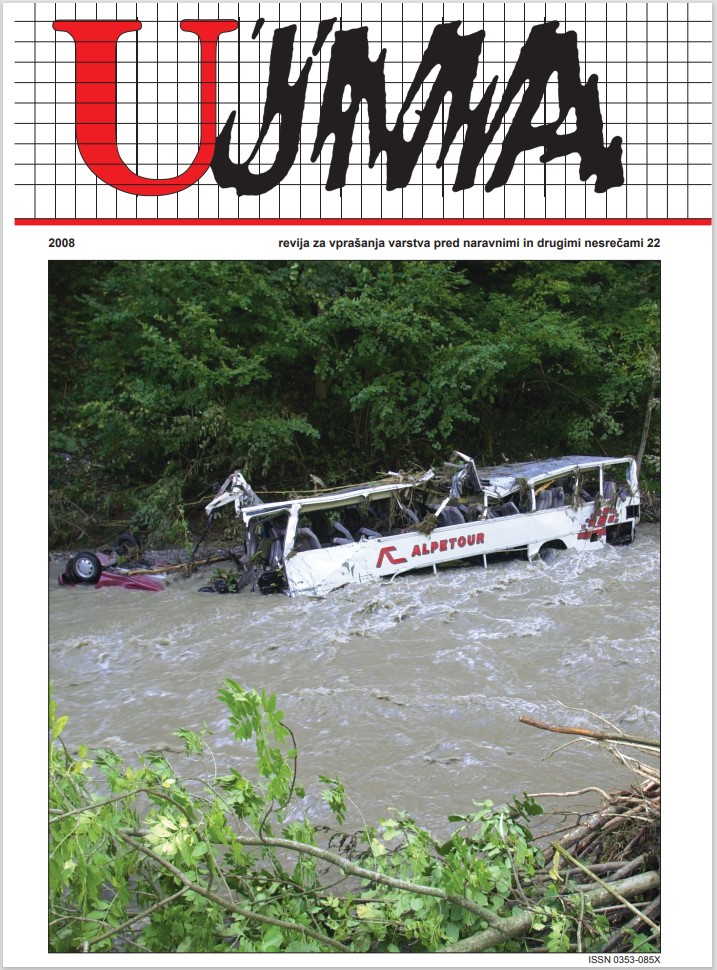SEISMOMETER TESTING AT THE CONRAD OBSERVATORY
Abstract
The project »Modernisation of the Slovenian National Seismic Network« started in 2000 and ended in 2006. Seismic stations were equipped with Quanterra Q730 data loggers and Guralp CMG-40T seismometers with flat frequency response from 50 Hz to 0.0333 Hz (period 0.02 s to 30 s). Recently some seismic stations were upgraded with Guralp CMG-3ESPC broadband seismometers with flat frequency response from 50Hz to 0.083Hz (period 0.02 s to 120 s). The main parameters of the seismometer indicated by the manufacturer are generic and can deviate from actual values. For this reason, comparing the Guralp CMG-40T and CMG-3ESPC seismometers with the STS2 seismometer, which is known as one of the best seismometers on the market, at a low-noise location, can give us a realistic presentation of the quality of the units tested. The main goal was to determine if the frequency band in which the noise of the seismometer itself is lower than the noise presented by the New Low Noise Model (NLNM) correspond to the one indicated by the manufacturer. For such testing, a low-noise location is needed. The closest and also one of the best laboratories for testing seismometers is the Conrad Observatory of the Central Institute for Meteorology and Geodynamics (ZAMG). The remoteness of the location and the undisturbed surroundings of the underground observatory allow this type of testing. Part of the observatory is a 150-m-long tunnel with several piers for seismometers. The seismometers (CMG-40T and CMG-3ESPC) being tested were installed in the tunnel next to a STS2 seismometer, which was provided by the Conrad Laboratory. Some preliminary results of comparing CMG-40T and CMG-3ESPC seismometers with the STS-2 are presented.
References
Albuquerque, 2008, http://earthquake.usgs.gov/regional/asl/ (citirano april 2008)
Holcomb, G. L., 1989. A direct method for calculating instrument noise levels in side-by-side seismometer evaluations. Open-file report 89-214, U. S. Geological Survey.
Holcomb, G. L., 1990. A numerical study of some potential sources of error in side-by-side seismometer evaluations. Open-file report 90-406, U. S. Geological Survey.
Peterson, J., 1993. Observations and modelling of background seismic noise. Open-file report 93-322, U. S. Geological Survey, Albuquerque, New Mexico.
Bormann, P. (ed.), 2002. IASPEI, New Manual of Seismological Observatory Practice, GeoForschungsZentrum Potsdam, Vol. 1, poglavje 3, 1—94.
Güralp (2008a), http://www.guralp.com/products/3ESPC/ (citirano 01.04.2008)
Güralp (2008b), http://www.guralp.com/products/40T/ (navedeno 01. 04. 2008).
Quanterra (2008), http://www.q330.com/ (navedeno 01. 04. 2008)
Čarman, M., Živčić, M., 2007. Analiza seizmičnega šuma na opazovalnicah (v letih 2003 in 2004). Potresi v letu 2005, ARSO, Urad za seizmologijo, Ljubljana, 30—40.
Streckeisen. Portable Very Broad Band Tri-Axial Seismometer: STS-2 manual, G. Streckeisen AG , SWITZERLAND, 1995.
Downloads
Published
Issue
Section
License

This work is licensed under a Creative Commons Attribution-NonCommercial-NoDerivatives 4.0 International License.
The articles are made available to the public under Creative Commons Attribution-NonCommercial-NoDerivatives 4.0 International (CC BY-NC-ND 4.0).


